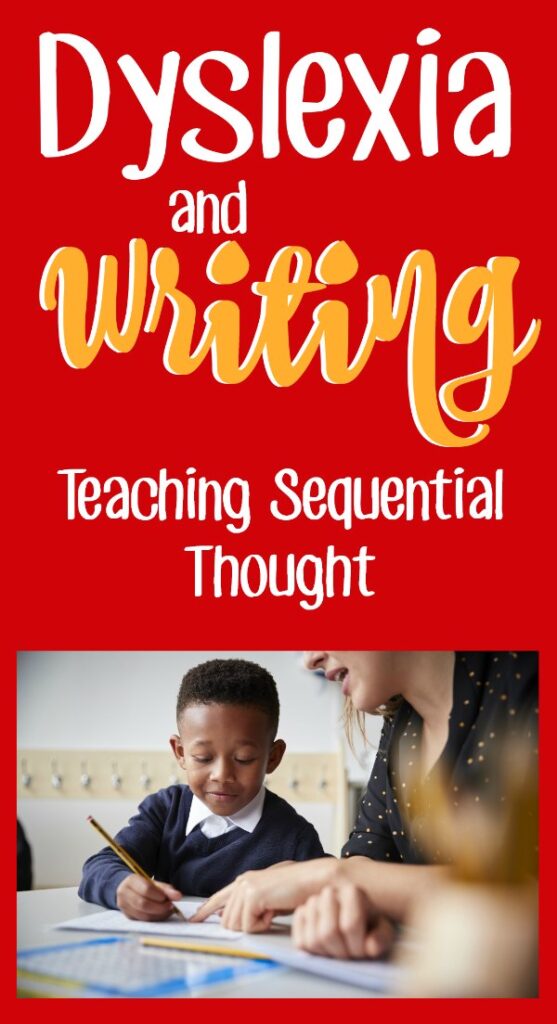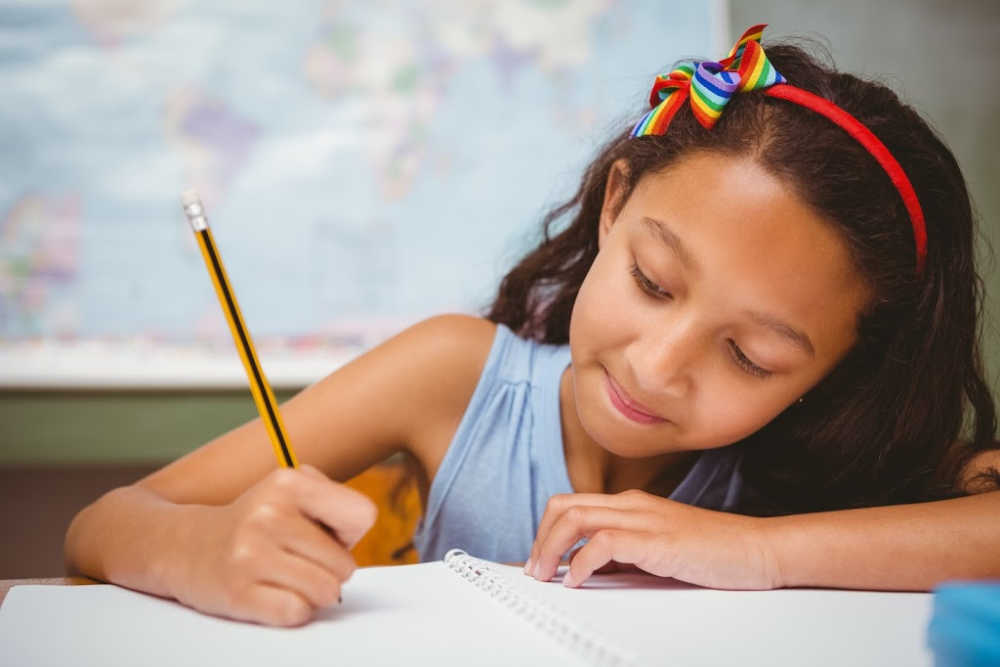For many students with dyslexia sequencing can be a struggle.
For all children, the ability to think and order sequentially is a precursor to learning to read and write.
We often only think of the dyslexic student’s difficulty with spelling when we think of their challenge with sequential ordering.
In actuality though, it is a much broader undertaking, which spans all areas of their education. Math problems require sequential thinking. Communication, both verbal and written, require sequential ability, everything from “telling a story” to grammatically writing a sentence.
Sequential thinking is a skill that is typically formed at the preschool level with activities where the children “order” the steps to making a PB&J or look at “mixed” up pictures with which they form a story.
 This post contains affiliate links for your convenience. Please read my full disclosure policy here.
This post contains affiliate links for your convenience. Please read my full disclosure policy here.
Preschool and kindergarten are times for developing all of these pre reading skills, necessary to become a competent reader over the next few years of their education. If you examine early childhood literature you will find a plethora of storylines which help a child develop and understand sequence of events.
Beloved authors understand this well. Eric Carl’s Brown Bear Brown Bear is an excellent example! By late kindergarten, continuing into first and second grade, the activities shift to helping the young beginning reader sequence story patterns and sentence structure in their reading and writing.
A student with dyslexia remains in the “pre reading” stage of sequential ordering skills for much longer then the typical student.
Yet, often curriculum does not allow for this and pushes them to move ahead before the skill of sequencing is solidified. This will result in them developing adaptive behaviors in order to “keep up” with their peers. “Holes” form that often remain hidden for many years and do not show up until they are expected to be “independent” when they cannot.
It was actually when I was working with my 1st/2nd grade daughter on sentence structure and grammar that I realized this was an area my 4th grade son with dyslexia indeed struggled with. He was already diagramming sentences like a champ. He could fairly accurately identify all the parts of speech.
Yet he wasn’t writing grammatically comprehensive sentences. He wasn’t “forming” them, even orally.
The activity I used to help with this skill comes from Creative Teaching Press Cut & Paste Sight Word Sentences. It best met all the needs of how a dyslexic best learns.
- It would provide repetition with the same process each day.
- The work page was not visually overwhelming.
- The words used were all “familiar” words.
- And it has the student “draw” to show comprehension which supports the need to “visualize” what they are reading and writing.
There are many similar work books, games and activities which could be used in the same way. Or sentences could be made up or even taken from books being read. Any “sentence building” model they can physically manipulate and a piece of paper to write and draw on would work.
Related: Sight Word Exercises Geared Towards Dyslexic Students
Each day the student completes one page. First, they cut out the words for the mixed up sentence. This is great to also work on fine motor cutting skills which sometimes lapse in older students who do not do as many “learning crafts” as when they were younger students.
Once all words are cut out, the student must physically put the words in order to make a sentence. In the beginning, this is definitely difficult, hence the need for the activity. The student needs to be walked through sequencing the sentence BEFORE it is glued down.
Look HERE for another activity to help your child with Dyslexia!
First have him read each word and discuss what part of speech each word is. Next, ask what he believes the “subject” of the sentence is, “Who or what is the sentence about?” Remind the student that the subject will be a noun or pronoun. The next guiding question is “What is __(the subject)__ doing?” That will be a verb. That is the “skeleton” of all sentences.
Once the student can identify the subject and verb, modifiers and supporting clauses fall into place by asking “W” questions: “to/for whom?”, “why?”. ‘where?’ “to/for what?”, “which?”and “when?”. Along with occasionally “how? And “to what extent?”
The book begins with simple sentences before building to more complex ones. It is a great progression building the students’ skills.
After the sentence has been correctly sequenced, the student then glues it to the page just above where they will then write the sentence. The writing of the sentence is important as this will now trigger another part of the brain, moving from just the “reading” process to the “writing” process. Be aware that a student that has developed adaptive skills may need a bit of extra attention and coaching to be sure they are actually “writing” and not copying.
The visual support is helpful for spelling confidence and letter order so the student can focus on word sequence, but the student should be working to “know” the sentence word order without having to “copy”. If needed you could cover the printed sentence and reveal a word or group of words after the student has “told” you what it is so they could then “check” spelling.
Finally the student will draw a picture which demonstrates comprehension.
It is helpful that the pages already have a “prompt” and the student is not depending solely on their drawing ability or lack thereof. I also stipulate that I am only looking for demonstration of comprehension and it is not an “art project”. I ask for pencil drawings only (with the exception of if a color word is being used as an adjective in the sentence) to avoid the non reluctant drawers spending an over abundance of time on “art work”. It is vital for the dyslexic student to complete this part of the activity though. It is necessary for them in forming true comprehension in reading and writing to build their “visual” language skills. They have to learn to “picture” what they are reading and writing.
Over the weeks this activity becomes easier and the student accomplishes independence. My son even progressed to the point that I moved him into the next level book Creative Teaching Cut & Paste Word Family Sentences, which incorporates some phonic practice. (There is also a third book, Creative Teaching Cut & Paste Vocabulary Sentences
.)
The student chooses the initial sound to form an appropriate word for the sentence. This adds word choice and more “freedom” for the student to create their own sentences. Which helps to transfer the sequential order skill to their own writing.
Within about six weeks, I saw improvement in my son’s sentence structure when he was writing or dictating. Most noticeably he could recognize when he was reviewing his writing, “That doesn’t sound right…” and fix it. Taking the time to back track and work on an earlier developing skill “filled the hole” and improved all aspects of his reading and writing experiences.
Want More Dyslexia Related Ideas?









[…] Look HERE for another activity to help your dyslexic child? […]